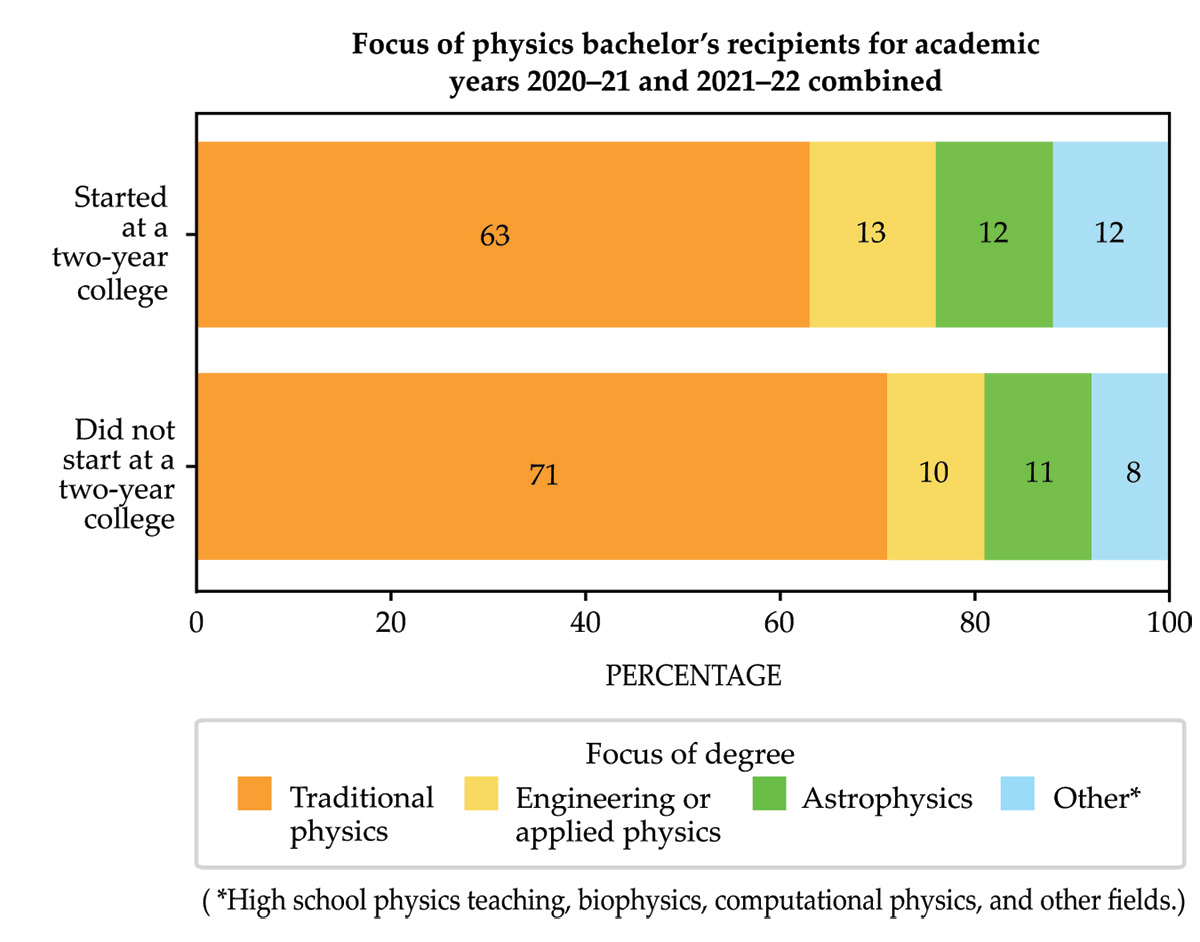Percentage of physics bachelors who begin at two-year colleges remains steady
DOI: 10.1063/pt.sqyc.nqnn
From 2014 to 2022, the proportion of physics bachelor’s degree recipients who started their postsecondary education at two-year colleges remained stable between 13% and 15%, according to a recent report by the statistical research team at the American Institute of Physics (which publishes Physics Today).
The report features survey responses from those who received their physics bachelor’s degrees in the 2020–21 and 2021–22 academic years. The data show that in their initial post-degree outcomes, the students who started at two-year colleges became employed or attended graduate school for physics or astronomy at similar rates to those who did not start at two-year colleges. The former were also less likely to attend graduate school in other fields and more likely to report being unemployed.
The higher the level of physics a student took in high school, the less likely they were to have started at a two-year college, according to the data. Additionally, bachelor’s recipients who started at two-year colleges were more likely to report science literature or a personal hobby as influences for choosing physics as a major, whereas those who did not start at two-year institutions were more likely to cite high school physics classes and participation in science fairs as influences.

(Figure adapted from J. Pold, P. Mulvey, Physics Bachelors: Two-Year Colleges as a Starting Point, American Institute of Physics, 2025

Physics bachelor’s degree recipients who started at two-year colleges were more likely to choose a focus within the major, such as teaching, biophysics, or computational physics, than those who began their postsecondary education at four-year institutions. Even so, the majority in both groups earned a traditional physics degree (see graphs). Those who started at two-year colleges also tended to be older when they received their bachelor’s degree: Their median age was 24, compared with 22 for those who started at four-year institutions.
More than half the degree recipients reported entering the workforce after graduation.
Those and other data are available at https://doi.org/10.1063/sr.f93246ff8f
This article was originally published online on 12 September 2025.
